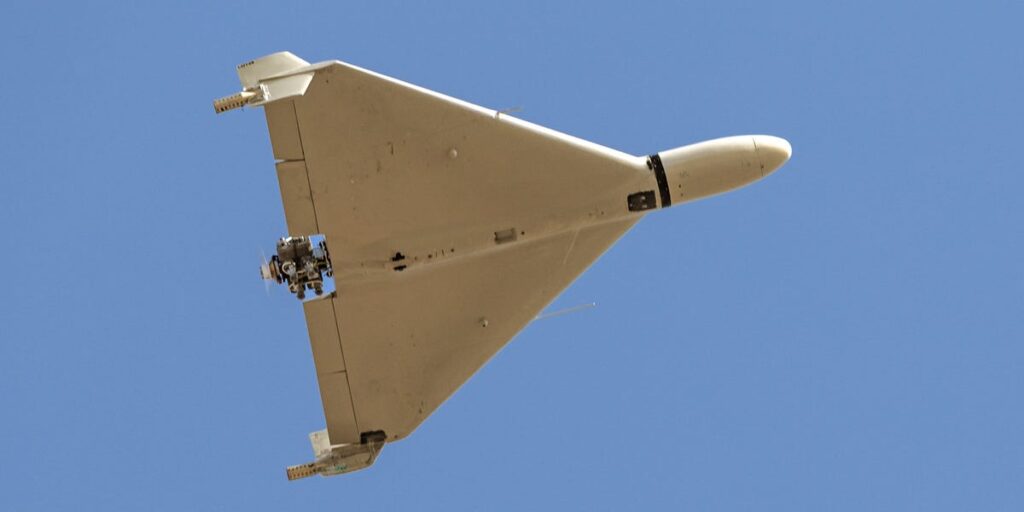- A Ukrainian drone maker is designing a UAV that’s designed to hunt down other drones.
- The Telegraph reported that Wild Hornets is building the Sting, which can fly at almost 10,000 feet.
- It’s targeted at the Shahed-136, an Iranian drone used heavily by Russia to bombard Ukraine.
Ukrainian drone maker Wild Hornets is developing an interceptor designed to counter Russia’s Shahed-136 loitering munitions, The Telegraph reported.
Dubbed the Sting, the new first-person view drone is built to fly faster than 100 miles per hour at an altitude of about 10,000 feet.
The Telegraph also reported that an artificial intelligence targeting system is in the works, though the Sting now still needs a pilot. A photo published by the outlet shows a quadcopter mounted with a bulky explosive payload and a camera dome.
Wild Hornets, an engineering nonprofit that says it’s delivered some 14,000 drones to Ukraine’s troops since early 2023, referenced The Telegraph’s report in a post on X published Sunday.
“30 to 80 Shaheds are launched against Ukrainian cities each day,” wrote the organization, which rose quickly to prominence this summer after unveiling aerial drones that can spit thermite or fire small arms.
It’s unclear what the Sting’s top speed is, but it will likely have to at least match the Shahed-136’s 115 miles per hour.
Ukrainian troops have successfully used first-person drones to down other drones before, deploying them against reconnaissance unmanned aerial systems like the Orlan-10 and the Zala.
Wild Hornets said in August that it had modified some of its drones to eliminate recon UAVs.
Now, the Sting is its attempt at a drone specifically designed to destroy other drones — particularly loitering munitions.
Wild Hornets did not respond to a request for comment sent outside regular business hours by Business Insider.
The Telegraph’s report didn’t mention the drone’s exact manufacturing price. However, a source from Wild Hornets told the outlet that the Sting’s “average cost is dozens of times lower than that of the Shahed drone.”
Shahed-136 drones are generally estimated to cost as little as $20,000 apiece, meaning that the Sting, if successful, would make defending against loitering munitions exponentially cheaper for Ukraine.
Much of the defense effort against such attack drones now relies on conventional arms, such as surface-launched missiles that can cost hundreds of thousands of dollars each. For example, a single missile fired by the US-supplied NASAMS in Ukraine costs around $1 million.
Kyiv has been looking into using old German-supplied Gepard cannons as a cheaper way of downing Russian drones, but is having trouble sourcing the Swiss-made airburst 35mm rounds it needs.
Meanwhile, Ukraine put out a call in early 2024 for developers who could design and produce interceptor drones. Officials said the minimum requirement was a flight speed of at least 60 miles per hour at an altitude of 5,000 feet.
While of Iranian design, Shahed-136s are now being built domestically by Russia under a weapons deal with Tehran, and Moscow is said to be churning out 6,000 Shahed-136s each year.
Both warring sides are now throwing themselves into a drone-making race, bulking up their defense manufacturing industries to produce the cheap yet deadly munitions en masse.
Russia announced in September that it was planning to increase drone production by 10 times, putting it at 1.4 million drones yearly.
Ukraine, on the other hand, said it can now make 4 million drones per year. Its president, Volodymyr Zelenskyy, said in October that local defense firms were already contracted to build 1.5 million drones, but did not say what kind.
Read the full article here
















